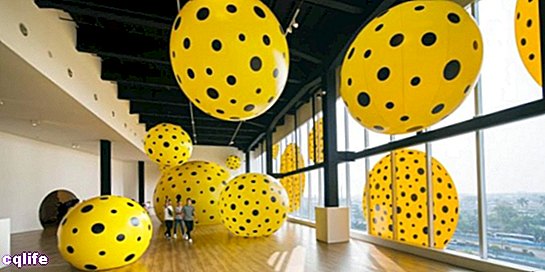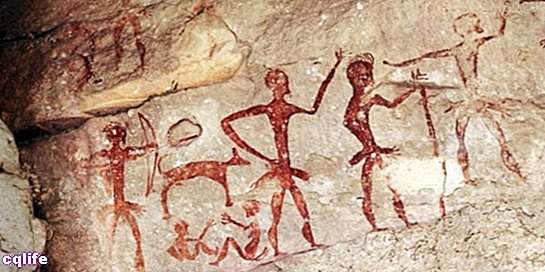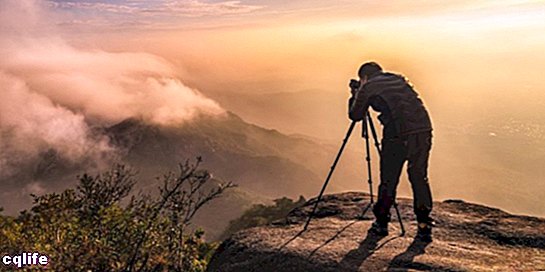- What is the art?
- Origin of art
- Characteristics of the art
- Importance of art
- What are the artistic disciplines?
- Art and culture
We explain what art is, its origin, characteristics and its disciplines. Also, why it is important and its relation to culture.

What is the art?
Art is any form of expression of a creative nature that people possess. Humans. It is the capacity of theman to represent your feelings, emotions and perceptions about his experiences and the environment that surrounds him.
Through the different artistic disciplines, an individual can express what he is and what he feels through an infinity of ways and techniques among which the use of linguistic, plastic and sound resources stand out. In many countries, art is one of the most important components of culture.
Throughout thehistory, the word "art" has spread throughout the world in all its forms. In the past, only some disciplines were considered art, such as painting, the He drew, the song, the literature and the dance. Today the concept of art encompasses many more techniques and forms.
The advance of thetechnology It is one of the fundamental pillars that allowed the creation and development of new forms of art. However, not all historians and philosophers agree with the definition of art today.
Commonly, the term "art" is confused with that of "craftsman." An artisan is one who reproduces multiple works and markets them, while, traditionally, art is considered to be based on unique and unrepeatable works.
It can serve you:Fine arts
Origin of art

The first artistic representations that are recorded date from the prehistory: the Stone age (Paleolithic, Mesolithic and Neolithic) and the Age of metals. During this period (which lasted from the beginning of the human evolution until 3000 BC C.) the first artworks.
One of the artistic manifestations of which there is a greater quantity and quality of record is painting cave. The human beings that inhabited prehistory were characterized by having a nomadic lifestyle and inhabiting caves.
Natural pigments, such as clay and rust, were used to make drawings on the stone of the caves; in them they represented their lifestyle and what they observed in the environment that surrounded them. They painted animalslions, hyenas, horses and rhinos) and hunting scenes.
Most of the cave paintings from this time are in caves within the present territories of France and Spain. These first artistic representations constituted what is called the prehistoric art and, in many cases, they were characterized by their figurative sense and their spiritual or religious character.
However, the discovery of paintings prior to the appearance of homo sapiens suggests that rock art has a long cultural tradition and that it was started by Neanderthal man who inhabited more than 40,000 years ago.
Another prehistoric artistic record was the so-called "paleolithic venus", small statues of female figures carved in stone, wood, bone or clay that were used in fertilization rites.
Early civilizations also made tools and utensils out of stone, wood, and bone, although it is believed that these had a more utilitarian than artistic purpose.
The invention of writing ended the prehistoric era and began the rise of the great civilizations in Egypt and Mesopotamia they developed a vast artistic identity.
Characteristics of the art

- It is dynamic. Art is in constant transformation. Artistic representations vary with the weather and according to the different societies or cultures.
- It is subjective. Art is made up of original and unique artistic representations that cannot be replicated. Each artist translates, interprets and represents the world according to his own point of view.
- It's universal. Art and the ability to produce it is inherent to the human being. Artistic expressions are made by individuals and groups without distinction of culture, race or gender.
- It is a means of expression. Art stands as the means of expression par excellence for the human being. Throughout history, man created and found various ways of transmitting and expressing emotions, opinions, thoughts Y values through the different idioms artistic.
- It is contemplative. Art does not have a utilitarian purpose. Its purpose is aesthetic and is considered a form of expression that seeks beauty.
- It is a creative activity. Art is the creative activity par excellence. Through the different artistic disciplines, the human being uses his potential and capacities to create.
- It is multidisciplinary. Art uses a multiplicity of tools and methods to be represented. The sound, writing, painting are some of the most used resources in art.
Importance of art
Art has a number of key functions for the developing of the human being and of societies.
First, it contributes to the documentation and recording of the history of civilizations. The artistic records that exist from different societies and cultures have made it possible to know the traditions and identity of tribes and communities. Artistic expressions function as a medium for the transmission of values, culture and ways of seeing the world. They provide both group and individual testimony.
Art is a means for creative development and the channel of expression par excellence of the human being. Through the different artistic disciplines, the individual transmits emotions and feelings, and makes his vision of the world known. It is a key tool within the education.
In addition, it is a channel for the individual to communicate with himself and with others; it works as a therapeutic and self-knowledge tool.
What are the artistic disciplines?

Art is usually represented through different artistic disciplines. All of these types of art have advanced over time. Among the most important are:
- Architecture. Set of techniques used to project and specify the construction of houses and buildings. Is aprocess covering the design of structures For future use, such as schools, institutions or hospitals. Centuries ago, architecture was made through processes very different from current ones, with other materials andmethods of construction.
- Body art. Artistic discipline that uses the human body as a support. Within this type of art is makeup, costumes, piercings and tattoos.
- Digital art. Artistic discipline that uses digital and technological means to make pieces. It is one of the most used artistic resources in recent years.
- Cinematography. Artistic technique by means of which sequences of images are reproduced which creates a sensation of movement. Cinematography emerged in 1895.
- He drew. Artistic technique that is based on the graphic representation of any type of element. It is the best known type of art and one of the resources that works as a basis for other types of art.
- Sculpture. Artistic technique that is based on the creation of works modeled with the hands with various types of materials such as clay, clay, wood or wood.metal.
- Photography. Technique based on capturing any type of image that is moving or not. During the last few years this technique has been advancing rapidly.
- Cartoon. Artistic discipline that combines short stories with images and drawings that are captured in boxes or vignettes.
- Painting. Artistic discipline in which images are created using pigments ofcolor. It is made on a large number of surfaces such as wood, paper, metal.
- Dance. Artistic discipline in which the movement of the human body is used, generally accompanied by music. Most cultures have a characteristic type of dance.
- Theater. Artistic discipline in which a group of persons (actors and actresses), perform a representation of a literary drama on a stage.
Musical Arts
- Singing. Artistic technique that is carried out using the voice.
- Music. Artistic discipline in which any type of musical instrument or sounds is used to generate arhythm. Music also includes singing.
Literary arts
- Poetry. Literary composition written in verse or prose used to express ideas, feelings and emotions.
- Narrative. Literary composition written in prose that tells a story through a narrator. Among the most common forms are stories and the novels.
- Drama. Literary composition based on the dialogue between two or more people. Through dialogue, a story is presented in which the actions of thecharacters.
Art and culture
The concept of art is often associated with that of culture. The concept of culture is a broad term that encompasses all individual and collective manifestations of a given society. In other words, culture includes both art and beliefs, traditions, values and customs of a community.
Culture is made up of knowledge, material and immaterial goods that transmit the identity, history and way of seeing the world of a group of individuals and includes language, religion, clothing, gastronomy, visual arts, historical sites.
There are different types of cultures that vary according to the elements that compose them and build their identity. Culture is transmitted from generation to generation and art is a fundamental component of all culture.
